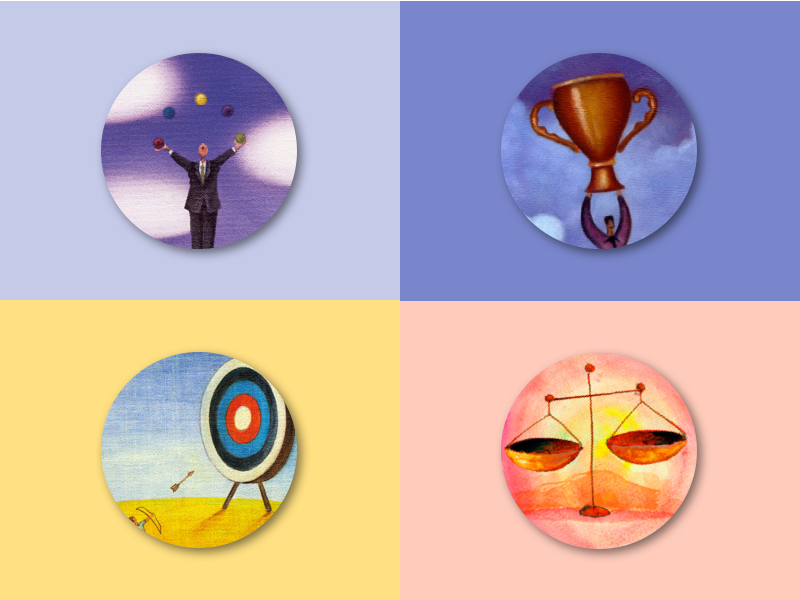
Lumosity Personas
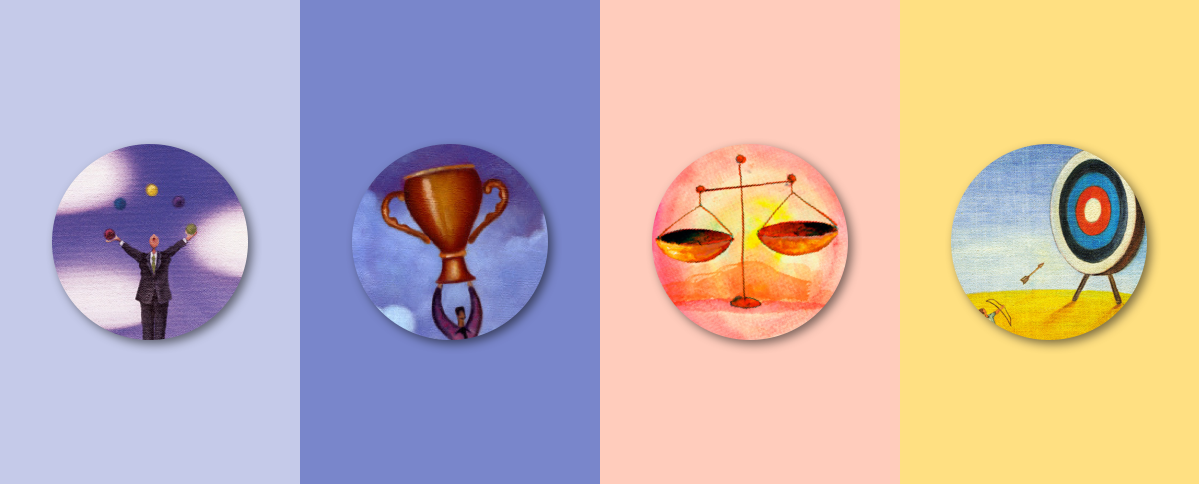
Discovering Lumosity Personas for Subscriber Engagement
Lumosity is a cognitive training platform with over 60M users and a substantial active, paying subscriber base. At the time, we knew lots about how to convert free users into paying subscribers, but we understood very little about our existing subscribers and what motivates them to keep training and keep subscribing. As our subscriber base grew, retaining these existing subscribers and preventing churn became a top priority for the company.
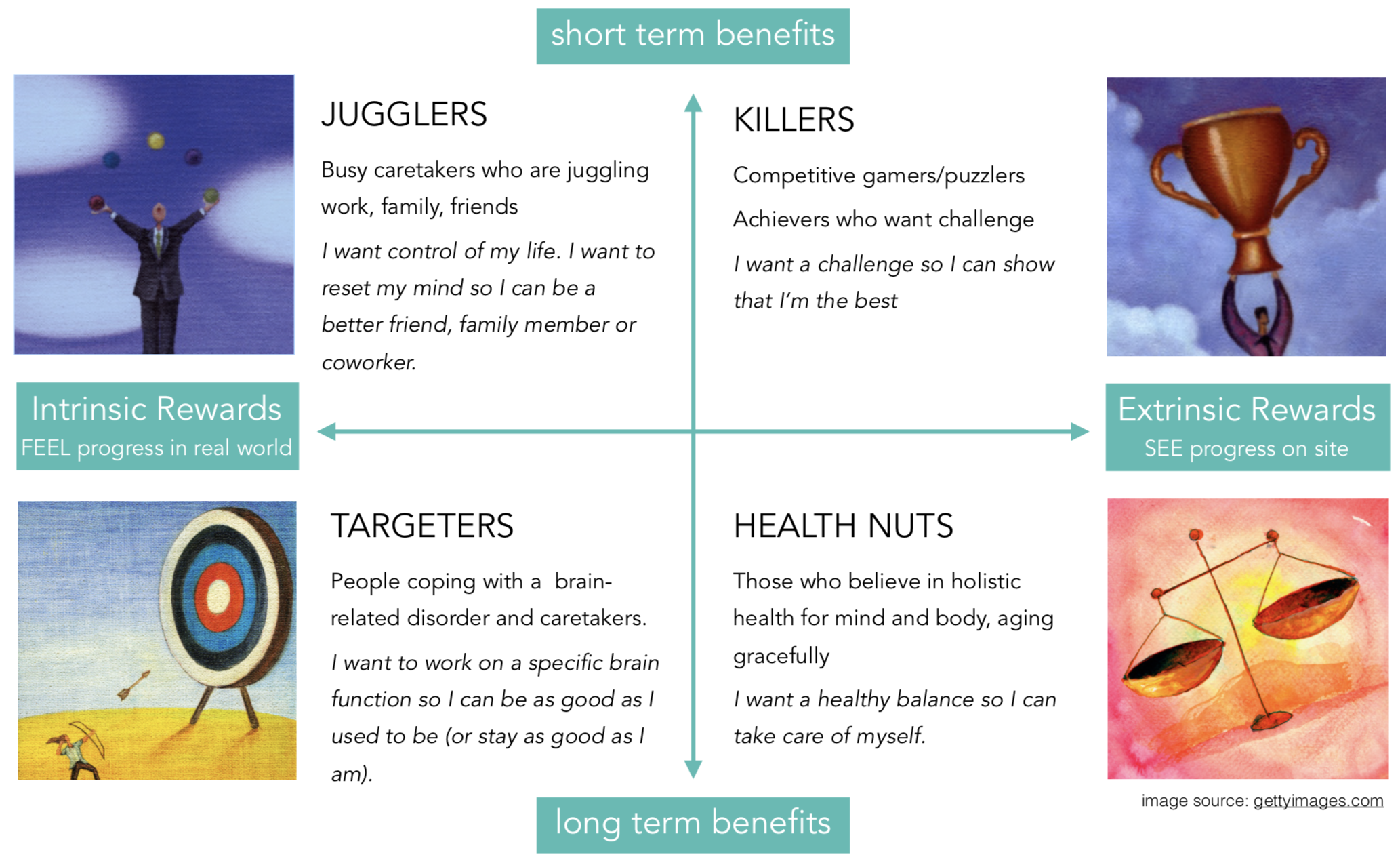
We developed four core personas that capture the key subscriber motivations for using Lumosity. Personas are a representation of the goals, motivations and behaviors of a real group of users. They are helpful for creating empathy for users, moving beyond purely demographic categorizations, and ultimately driving design and product decisions.
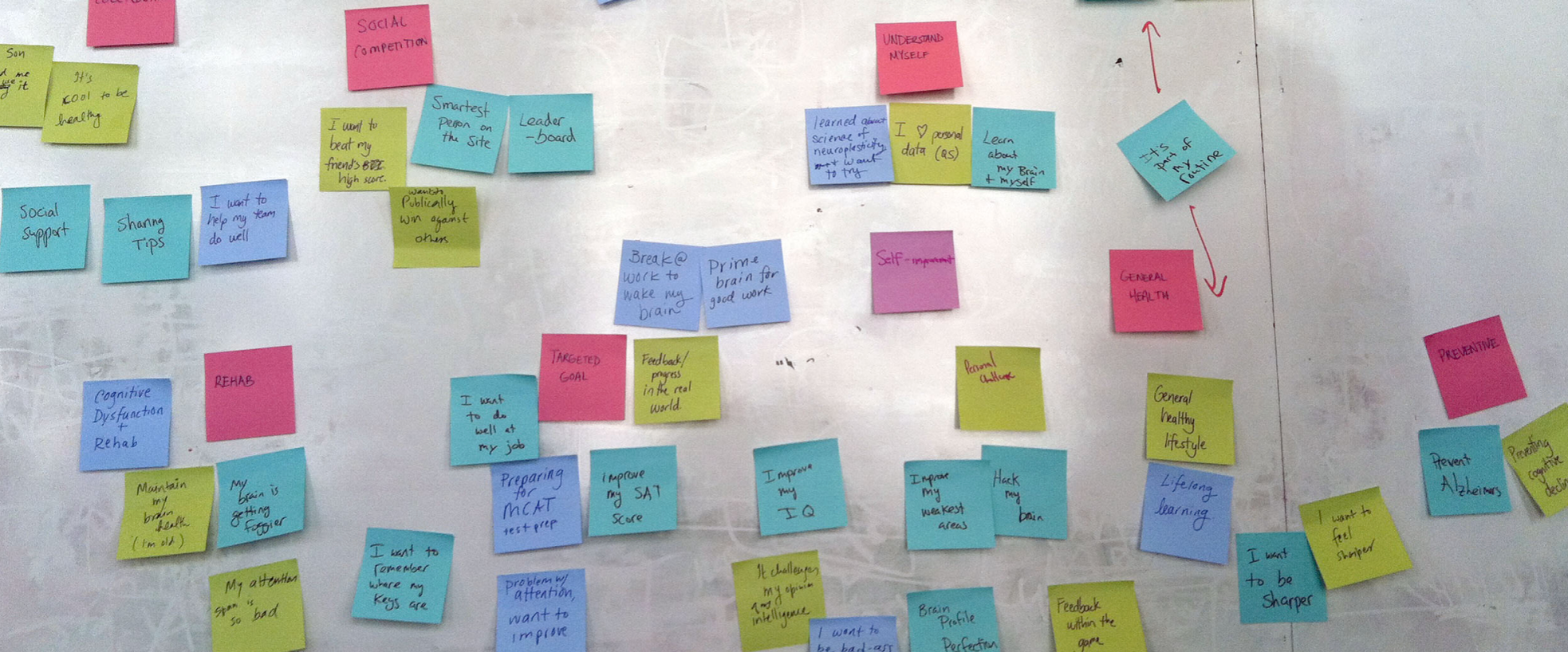
These personas were synthesized from over 20 in-depth user interviews and hundreds of written testimonials. We compiled users' motivations, desires, and behavior patterns onto sticky notes, and then led a clustering exercise to create meaningful groupings. We took inspiration from Bartle's Player Persona model in developing four categories of Lumosity player types.
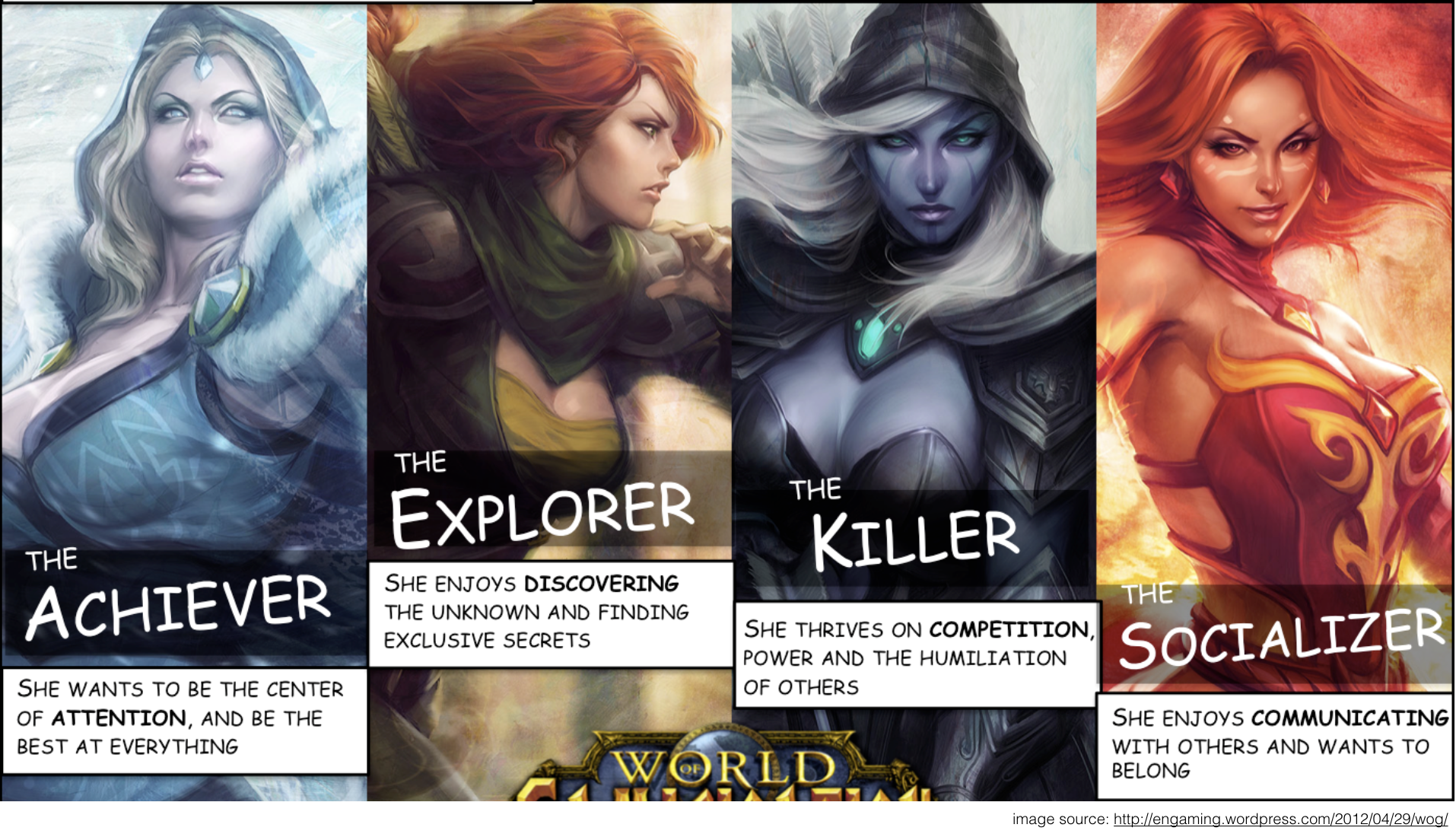
We discovered two important motivational axes: (1) Intrinsic vs. Extrinsic rewards: e.g. needing to personally feel the benefits of brain training vs. needing to see progress within the app; (2) Long-term vs. Short-term benefits sought: e.g. wanting to maintain a healthy lifestyle vs. relief from momentary stress. The four personas, Targeters, Health Nuts, Jugglers, and Killers capture the main subtypes of Lumostiy users.

These personas have helped shape the design of many new features since their inception. They continue to provide a vocabulary for designers, PMs, and engineers to better understand the people we are building for.
MY ROLE: I was the lead/sole researcher who designed and implemented user interviews and other user studies to gather initial data. With help of 2 other design leads we collaborated to synthesize these into distinct user types and together crafted the four personas featured today.